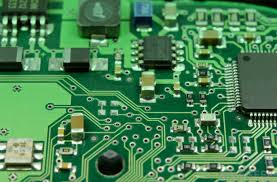Innovative Design Capabilities: The Key to Advanced Solutions
In the competitive field of PCB manufacturing, companies that lead the market are those with robust and innovative design capabilities. A standout PCB manufacturer not only offers standard design solutions but also customizes according to client specifications. This adaptability is crucial in industries like aerospace and medical devices, where unique designs that accommodate specific functionalities are required. For instance, top manufacturers utilize advanced software like CAD (Computer-Aided Design) tools that enable them to produce boards with precision tolerances as tight as ±0.01 mm, essential for high-density interconnect (HDI) PCBs.
Quality Assurance: Non-Negotiable for Industry Leaders
Quality assurance is another pillar that distinguishes superior PCB manufacturers. The best in the business maintain certifications like ISO 9001 and IPC 6012, which set the standards for PCB production quality. They implement rigorous testing processes at multiple stages of production to ensure that every board complies with both customer expectations and industry standards. Techniques such as Automated Optical Inspection (AOI) and X-ray inspection are commonly employed to detect any possible defects early in the production cycle, preventing costly reworks and ensuring reliability in high-stakes applications.
Speed and Flexibility in Production: Meeting Tight Deadlines
The ability to deliver products swiftly and adapt production schedules to meet tight deadlines is a significant competitive edge for PCB manufacturers. Leading companies offer rapid prototyping services that can turn around projects within 24 hours, an essential service for industries needing quick product iterations and immediate testing. Furthermore, flexibility in handling variable production volumes—from prototype to full-scale production—without compromising on quality or delivery timelines, is a testament to a manufacturer's operational excellence.
Environmental Compliance: Commitment to Sustainability
As environmental regulations become more stringent, standout PCB manufacturers are those committed to sustainable practices. These manufacturers not only comply with international standards such as RoHS (Restriction of Hazardous Substances) but also integrate eco-friendly processes throughout their operations. For example, leading manufacturers have reduced their use of lead and other toxic chemicals by up to 75% over the past decade, while also investing in recycling and waste management systems that minimize their ecological footprint.

Customer Support and Technical Assistance: Enhancing Client Relationships
Exceptional customer support and technical assistance are vital for maintaining long-term relationships with clients. Premier PCB manufacturers provide dedicated support teams that assist with design challenges, offer technical guidance, and ensure smooth communication throughout the manufacturing process. This level of support is crucial for clients who rely on detailed and specific technical feedback to optimize their product designs for better performance and cost-efficiency.
Looking Forward: Staying Ahead of Technological Advances
The best PCB manufacturers are not just current with technology—they anticipate future trends and adapt accordingly. They invest heavily in research and development to pioneer new technologies and materials that meet the evolving needs of industries like telecommunications, automotive, and consumer electronics. For instance, the adoption of 5G technology has prompted manufacturers to develop PCBs that can operate at higher frequencies and lower latency.
In conclusion, a PCB manufacturer that stands out in today's market is one that offers comprehensive solutions encompassing innovative design, stringent quality controls, efficient production capabilities, environmental responsibility, and excellent customer service. These attributes not only ensure the production of high-quality PCBs but also foster strong client relationships and adaptability to future technological shifts.
